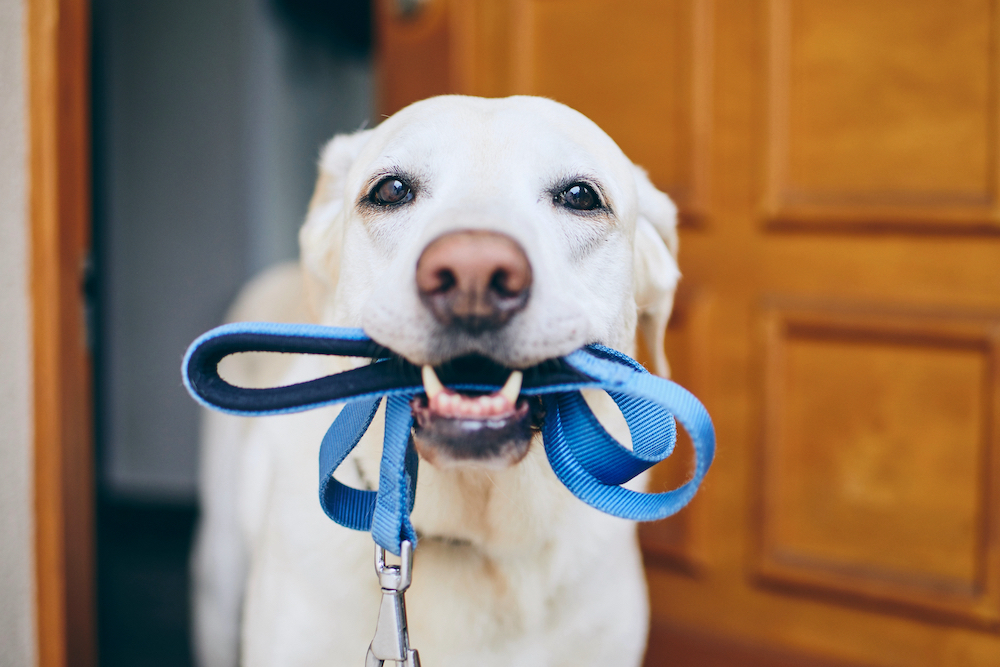“Who’s going to walk the dog?” is one of the first questions skeptical family members ask before a pup joins a household. This makes sense: Walking a dog is among the most basic, crucial tasks associated with their care. A proper walk is more than just a potty break; it has countless physical and mental benefits for your dog (and you).
How often a dog needs to be walked isn’t necessarily simple, though. The answer, as with many dog-care questions, is “it depends.”
Walking the dog: TL;DR
Every dog is different, but it’s reasonable to take most healthy adult dogs out three times per day, aiming for a total of 45 minutes to an hour or more of walking.
Yuruani Olguin, a dog trainer in New York City, agrees. “Three times a day would be a very ballpark number,” she says—adding that, usually, one of those walks should be at least 30 minutes long. However, as Olguin and others will tell you, many factors can change how often a particular dog should walk, and for how long.
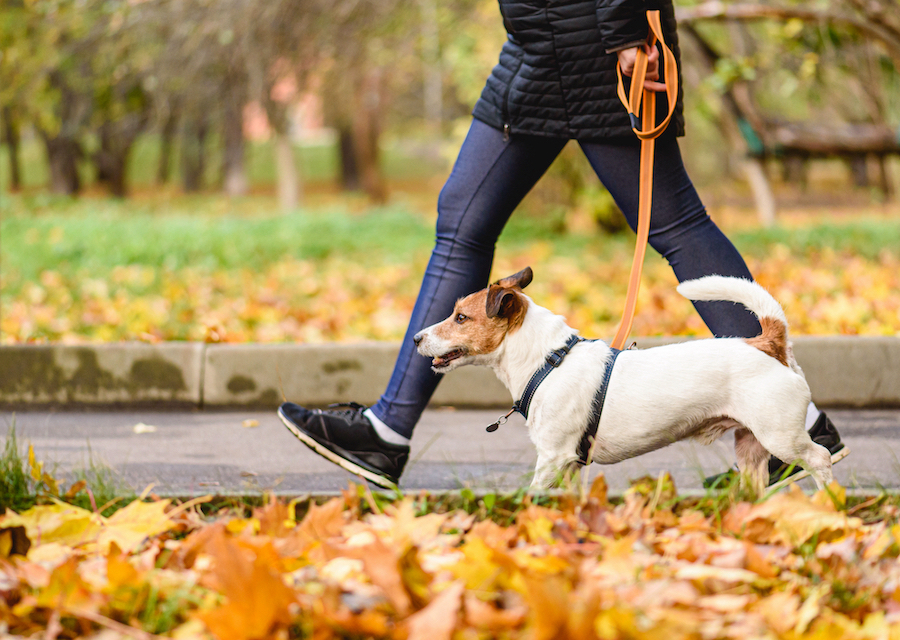
Why to walk your dog
As you figure out how often your dog should walk, it’s useful to think about why walking is important for dogs in general. It’s not only for physical exercise—there are also mental and emotional considerations. Walking’s benefits to dogs include:
- Mental stimulation. Boredom is a constant threat to homed dogs, and bringing a dog outside a few times a day is a good way to introduce new, interesting stimuli into their lives. They can take in a variety of scents (smell is a dog’s most powerful sense) and meet other dogs and people, if that’s something they like to do.
- Physical fitness. Regular exercise can play a role in maintaining a dog’s ideal body condition. The right amount of exercise can also be good for their joints—helping to prevent arthritis or ease it. Talk to your vet about what exercise routine is appropriate for your dog.
- Emotional wellbeing. As it can for humans, regular exercise can allow dogs to de-stress. Furthermore, having positive experiences—like pleasant walks—with your dog can strengthen your bond. That’s one of many arguments for paying attention while you’re out with your pal.
- Peeing and pooping. Most dogs pee and poop outside, so one reason they require a few outings a day is to take care of those chores. Elimination is a necessary, but not sufficient, component of their walking routine.
“Preferably,” Olguin says, “the walk should be catered to what the dog most enjoys. Some dogs like to walk briskly, and they go on an adventure. I find that a lot of dogs enjoy a sniff walk—and it can be really enriching and tire the dog out just as much, sometimes, as if you were targeting a certain distance. So I would encourage dog parents to learn about their dog: what are their dog’s needs?”
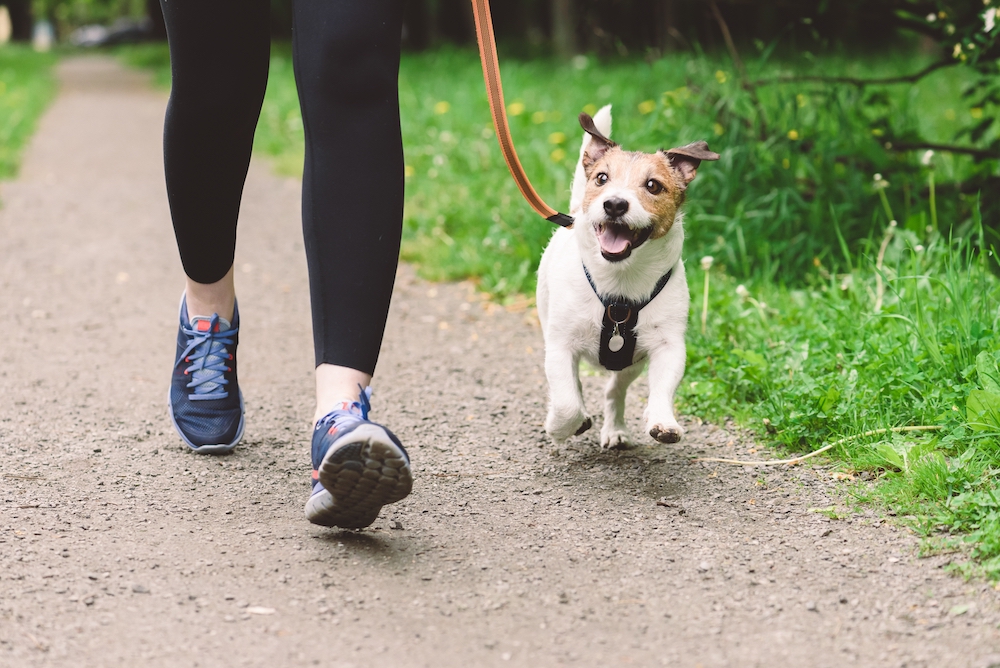
The walk is about your dog
In a recent Psychology Today post, Dr. Marc Bekoff—professor emeritus of ecology and evolutionary biology at the University of Colorado, Boulder—wrote: “I’ve heard some people brag about how much exercise their dog gets, but they’re constantly yanking them along on their lead—or, even when their dog is free to run around when they’re on a path or at a dog park, they’re constantly helicoptering them.” Dogs need walks that are fun, during which they can use their senses to explore the world around them.
“If you’re trying to run a quick errand and your dog isn’t going to walk at the pace that you’d like to get there,” says Olguin, “don’t try to do both things at once.” She says that this can lead to a cycle of frustration that serves neither the person nor the dog, and cause the dog to have a negative experience. “If you’re walking your dog,” she says, “the dog is the whole purpose of that outing. It’s not about getting all of those other things done at the same time.”
Even for dogs who have other ways to get exercise, walks offer benefits that are well worth pursuing. Asked why he walked his dogs when they lived in the mountains and had plenty of time to roam and play on their own, Dr. Bekoff explains that it was a chance for bonding, and for the dogs to meet some canine friends they didn’t encounter near his home. “It also was good exercise for their senses,” he says, bringing them into contact with “new odors, sights, and sounds.”
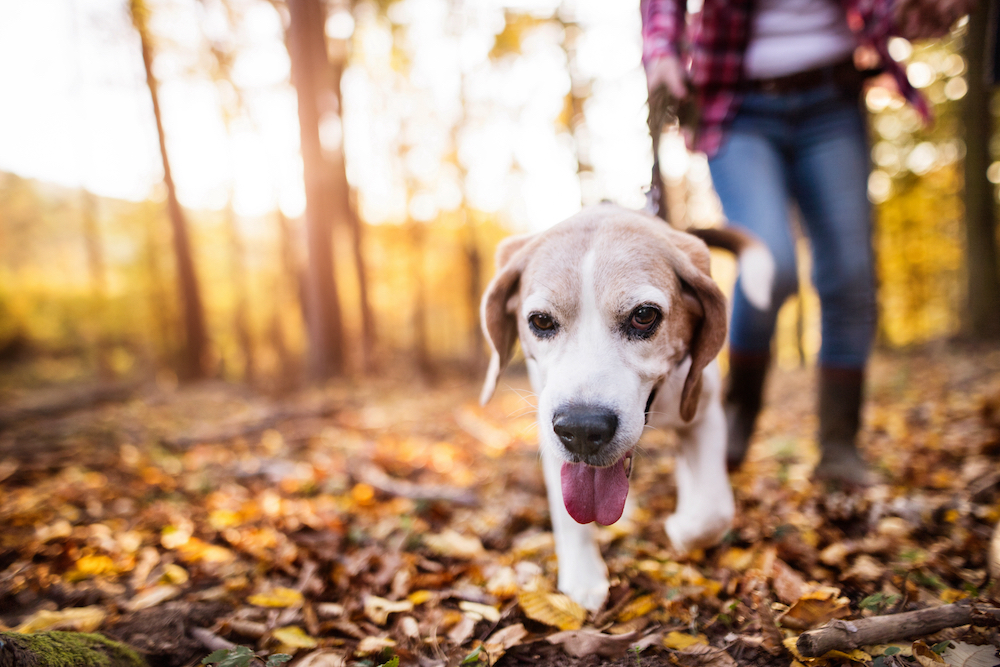
Your dog needs the right amount of walking
Dogs should receive the right quantity and type of exercise for their individual circumstances. Figuring out what that means requires watching them, interpreting the signals they send you, and consulting with a veterinarian or trainer when appropriate.
Exercise is vital to dogs’ health, and many of them don’t get enough of it. With this in mind, giving a healthy adult dog more walks or other opportunities to move around will typically pay dividends for them. Olguin names some signs that a dog isn’t getting enough walks: “destructive behavior” at home, “excessive barking” out of boredom, and “excessive pulling or overexcitement” when they do get to go out.
However, it is also possible for dogs to get too much exercise. For one thing, dogs need a lot of rest—and, when left to their own devices, that is how they spend much of their time. And there may be days when, for whatever reason, your dog doesn’t want to walk far.
One way to handle this variability is to give your dog the chance to go outside and exercise, but to take their cues about what they want.
“If they’re stopping frequently, laying flat on the sidewalk, it’s time to go back home,” Olguin says of tired dogs. “Don’t push them.” While you should call a vet if your dog seems to have trouble walking at all, or to tire too easily, you should never force your dog to keep going when they’re exhausted.
There’s also no need to turn a dog who prefers a deliberate sniff session into a marathoner. “A hound might not get as far as, say, a border collie in a 30-minute period,” says Olguin, “but it could be just as enriching for the hound to be in a 2-block radius as it was for the border collie to do a three-mile walk in that time.”
None of this is an excuse not to take your dog outside; but it is a reminder that every dog is different, and even the same dog can be different from day to day.
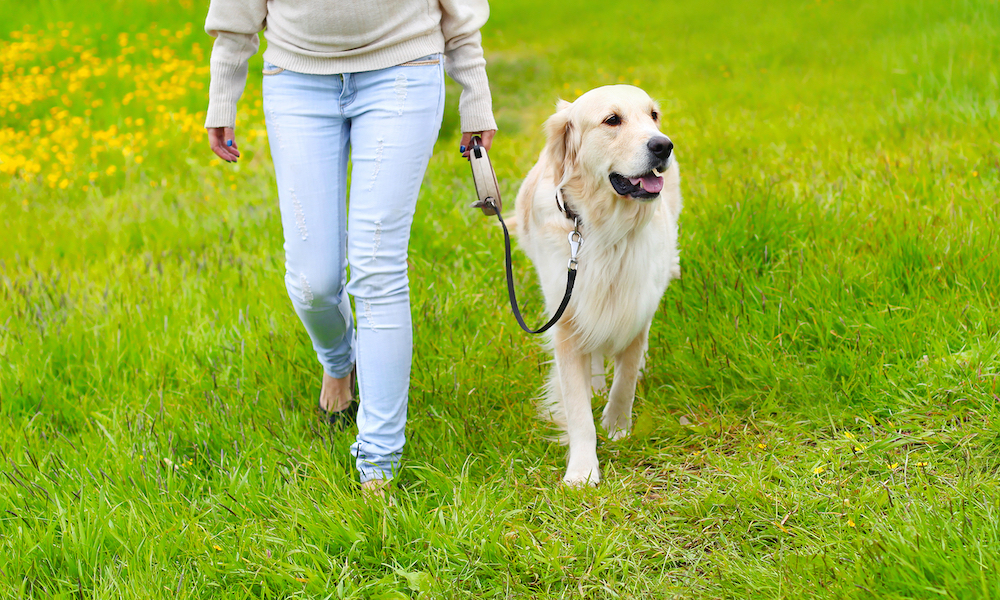
If your dog seems not to like walks at all, you should bring in help
Like a person, a dog can have a day when they don’t feel like doing much. But if you find that your dog displays a general aversion to walking, your first stop should be the veterinarian. The vet can examine your dog and rule out any medical problems.
If your dog is in good physical health and still does a 180 back home every time they go to the bathroom—or shows other signs that they’re not into walks—Olguin says that there may be a fear-related issue. Those can often be addressed through counterconditioning with the assistance of a qualified trainer. Treats can make a walk more fun for some dogs, as can a destination like a park (assuming, of course, that said dog is fond of the park).
Dogs also sometimes object to the equipment their people put on them for walks—if your dog’s collar or harness is uncomfortable for them, try a different one.
The conditions outside, too, can make a dog want to go back home. A very hot day isn’t the best time to give any dog a long walk, and you should be especially careful with brachycephalic—or flat-faced—breeds, who can experience breathing trouble during such conditions.
It’s okay if you sometimes have an indoor day
Speaking of bad weather: While dogs should get a few opportunities to go outside each day, in the real world situations can arise that make bringing your dog outdoors ill-advised or impossible. This summer alone saw various regions of the United States face hazardous air from wildfire smoke, while the southwest encountered stretches of 100-plus-degree heat. Winter can bring blizzards, and heavy rain can fall at any time.
When weather conditions or other problems get in the way of your dog’s usual walks, try giving them some extra enrichment. We have a guide to indoor activities for dogs—food puzzles, snuffle mats, and scavenger hunts are among your options. For social dogs, playdates with friends or visits to daycare can also be a boon on rainy days.
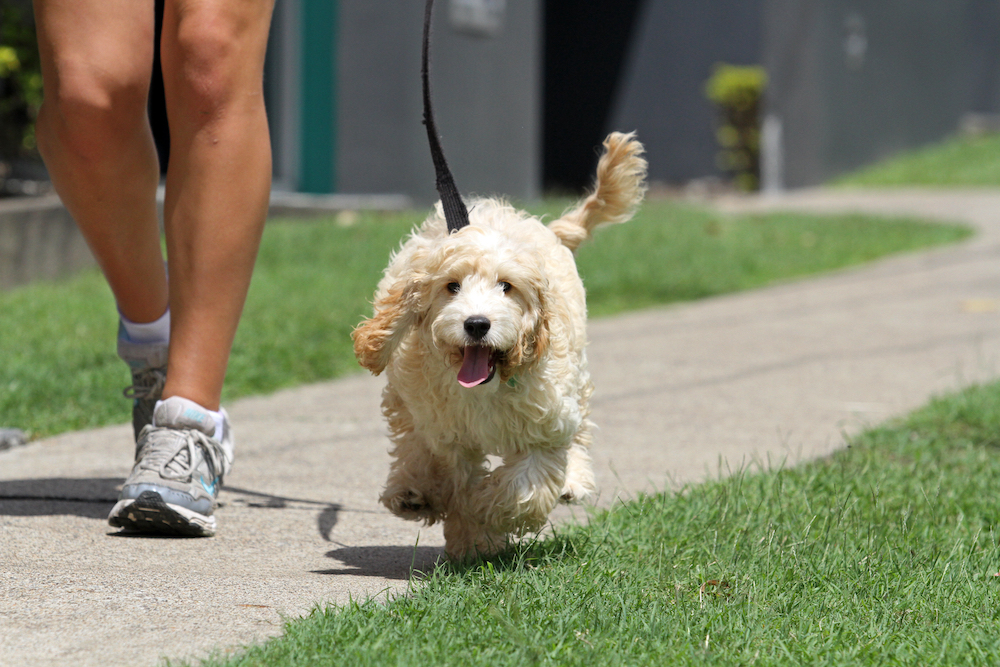
Dogs with mobility challenges can still get exercise and enrichment
Many of the same activities that work on rainy days can keep dogs active when they’re not able to walk, or can’t walk very much. Consult a veterinarian if you’re not sure how much your dog can or should walk—but brain games can help keep disabled dogs mentally active and happy, and dogs with mobility issues can enjoy outdoor sights and smells with the aid of tools like strollers.
Observe your dog and make sure that they’re having a good time—do more of what they like, and less of what they don’t.
A word about puppies
Puppies will need frequent trips outside as they potty train, but you’ll have to physically and mentally acclimate them to walking. You could hurt a puppy’s body by rushing them into long walks, and also might harm their socialization if you give them too much to process too fast.
Olguin recommends starting slowly. “Just go up and down your block initially,” she says, and watch to see how they feel.
Another consideration for young puppies is that, until they’re fully vaccinated, you’ll need to avoid exposing them to certain germs.
Vets advise easing puppies into physical exercise—see details here—and the specifics can vary depending on their breed and other factors. The best resource as you determine how much exercise to give a puppy—and where they should get it—is your veterinarian.
You may not have time to walk your dog, but they still need exercise
Human lives are busy and complicated, but it’s not fair to leave your dog at home alone for eight hours while you’re at work. Whether you hire a dog walker, have a friend or partner take them out, or leave them with someone trustworthy who can look after them, your dog needs company and interesting things to do during the day. Whatever option works for you, find a safe way to give them exercise and enrichment.



